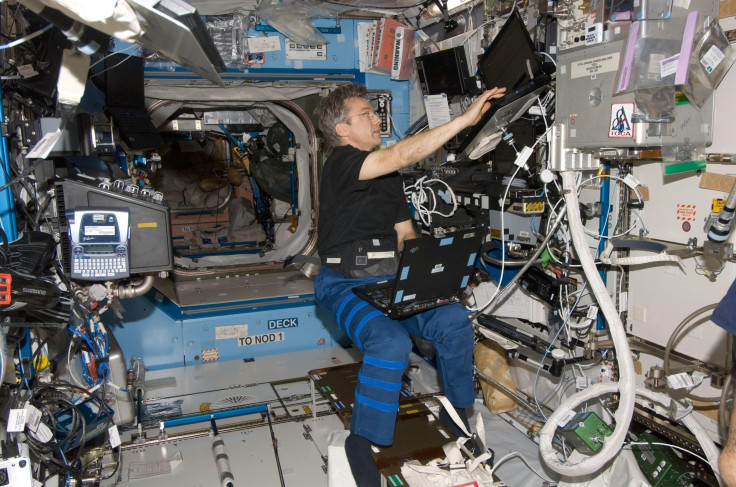NASA, Hewlett Packard Enterprise To Test Spaceborne Computer To Withstand Space Radiation

When SpaceX’s latest cargo mission to the International Space Station (ISS) lifts off Monday, among the rest of its payload will be something that has possible ramifications for future long-term space travel: an experiment to design computers that are resistant, if not immune, to the effects of radiation in space.
Called Spaceborne Computer (SBC), the year-long experiment is a joint effort between NASA and Hewlett Packard Enterprise. It is a supercomputer which HPE has developed for the space agency “to run a high-performance commercial off-the-shelf (COTS) computer system in space,” according to a statement the company sent to International Business Times. “The goal is for the system to operate seamlessly in the harsh conditions of space for one year – roughly the amount of time it will take to travel to Mars,” it added.
This kind of an experiment is important because “radiation is likely to have a number of unanticipated effects on complex computer systems. This experiment helps identify critical failure points in electronic systems, as well as potential software ‘patches’ that can prevent them,” according to NASA. Closer home, it has potential applications on Earth as well, where radiation events like solar flares can endanger computer systems.
TRENDING: Apple Postpones September Launch Of iPhone 8
On its website, NASA said the experiment will help devise ways to use software to protect the computers aboard ISS and future spacecraft without the need for bulky, expensive shielding for protection from radiation.
“One of the goals of the experiment is to find a set of software parameters that allow the COTS supercomputer to continue to function and produce correct results in the harsh environment of space. To clarify, nothing at all has been modified with any of the hardware or the open-source operating software. In order to HARDen with software, several layers of detection, correction, and protection have been created. Success would be a set of software parameters that produce correct results for a year,” Mark Fernandez, Americas Technology Officer of SGI at HPE, told IBT.
In essence, the experiment will involve the SBC running data-intensive applications, while power consumption is monitored and dynamically tuned. And this will be done on not one but four identical machines, two of which will operate on the ISS and the other two in HPE engineering laboratories in Chippewa Falls, Wisconsin, serving as control samples.
After a year on board the ISS, SBC-1 and SBC-2 will return to Earth, where they will be compared with the two Earth-based Computers.
“We then will do the typical failure analysis on Earth that we do with all failed and returned systems. Maybe an engineering change would prevent such a failure. Maybe it was a specific vendor and we need to tighten specifications. All the usual things we do/learn from failed systems in order to make them more reliable in the future. These changes will affect not only space systems but all of the Earth-based systems from HPE,” Fernandez said.
POPULAR NOW: Norovirus Outbreak On Cruise Ship Sickens 91 Passengers

The four super-computers use “2-socket ‘pizza-box’ servers from the HPE Apollo 40 family with Broadwell class processors and a high-speed 56 Gigabit per second interconnect. With a speed of over 1 TeraFLOP, while it's not going to give serious competition to the world’s fastest supercomputer, this really is a supercomputer,” he added, providing the specifications of the machines.
According to NASA, the systems are likely to generate about 5.4 MB of data every day, which will be stored on the solid state disks in the systems. However, the space agency added it was “desirable to download these files daily for safekeeping and analysis.”
Eng Lim Goh of HPE is the principal investigator for the project. It will be sent to the ISS on a SpaceX Dragon spacecraft that is scheduled to take off Aug. 14, aboard a Falcon 9 rocket, from Cape Canaveral, Florida. And this is just the first phase of this experiment, HPE said in its statement.
“Future phases of this experiment will eventually involve sending other new technologies and advanced computing systems, like Memory-Driven
Computing, to the ISS, once we learn more about how the Spaceborne Computer reacts in space. If astronauts are going to make it to Mars one day, they’re going to need the most sophisticated computing system possible at their disposal and we will continue to work towards that,” the company said.
© Copyright IBTimes 2024. All rights reserved.




















